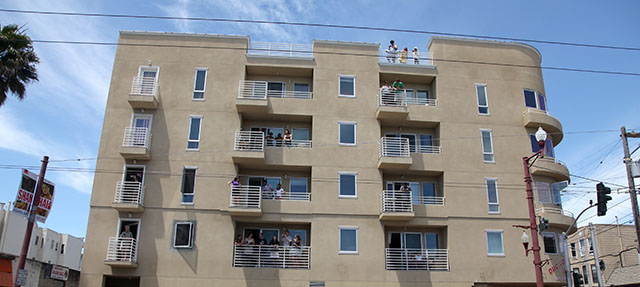The COVID-19 pandemic has been a tragedy. Over one million Americans have died, and many more have lost loved ones, suffered through debilitating illness, or struggled with loneliness and isolation. The pandemic has also been the largest demographic catastrophe since World War II. In California and the nation it has left a profound imprint in the age distribution and on overall life expectancy. Yet as the virus has gradually receded, improvements now lie on the horizon.
The demographic concept of life expectancy measures how long the average person would live if current death rates by age applied throughout their lifespan. Spikes in death rates among the young have outsize effects on this calculation because a young person’s death means more years of lost life. But an increase in deaths at older ages—even among seniors—can also have big effects if the surge is large enough.
Before the pandemic, Californians lived longer than residents of most other states. In 2019 the state was tied with Hawaii for the longest life expectancy at 80.9 years, notably higher than the national average of 78.8 years and far higher than the lowest state, Mississippi (74.4 years).
Since then, life expectancy has declined dramatically. It fell almost a full two years in both California and the nation as a whole in 2020, and provisional estimates suggest a further half year drop in California and a full year drop nationwide in 2021 (the latest year for which it’s possible to estimate). These are the first appreciable downturns since World War II.
Of course, the primary cause of the decline has been the pandemic. The number of deaths in California increased by just over 50,000 in 2020 compared to 2019 (a 19% increase), and 2021 saw an additional increase of almost 10,000 more deaths than 2020 (and 60,000 more than in 2019). Johns Hopkins University estimates that 76,000 Californians died of COVID-19 in 2020 and 2021, and data from the California Department of Health show a dramatic increase in deaths due to COVID during that period. The only other notable increases were due to accidents (primarily drug overdoses) and heart disease, but those causes, along with all other reasons, accounted for only about a fifth of the additional deaths, with COVID-19 accounting for about 80% of the increase.
These deaths have disproportionately affected Latino and Black residents. Between 2019 and 2021, the death rate (deaths per 1,000 residents) increased 51% among Latinos, 31% among Blacks, 26% among Asian-Americans, and 17% among whites. These striking disparities are related to several factors. For example, Latino Californians are more likely to live in crowded households, work in front-line jobs, and have less access to health care than other groups. For both Latinos and Blacks, less access to health care (as well as distrust of the health care system) initially led to slightly lower vaccination rates than among other groups.
The 1918 flu pandemic had a much bigger impact on life expectancy, but it also killed far more young people who would have been expected to live decades longer. COVID has been much harder on seniors. Between 2019 and 2020, the death rate increased 21 per 1,000 for Californians over 80, compared to 3 per 1,000 for 65–80 year olds, and less than 1 per 1,000 for those under 65.
Despite these grim outcomes, California has fared better than most states. Public health efforts, along with state and local policies, have led to a lower death rate from COVID than in the rest of the country and other large states—including Texas, Florida, and New York.
The outlook for 2022 and beyond is more hopeful. Year over year, the number of COVID-19 deaths in 2022 has been less than half the number in 2021—about 19,000 through September 22 of this year compared to almost 44,000 for the same period in 2021, per Johns Hopkins University. And the average over the past few months has been much lower than at the start of the year. If deaths from COVID continue to remain relatively low, California can anticipate increases in life expectancy in the years ahead.





